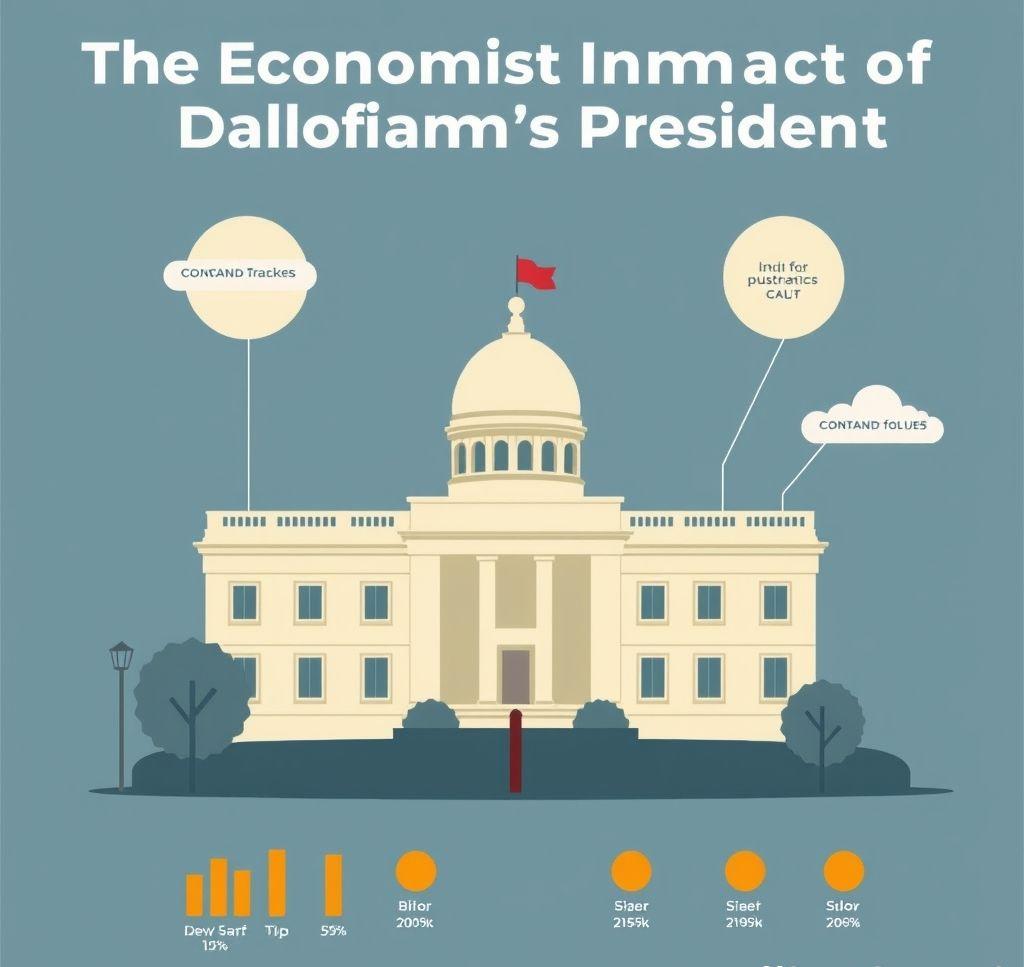The Economic Landscape of Donald Trump: An In-depth Analysis
Donald Trump’s economic policies and their impact have been a focal point of debate since he descended the escalator in Trump Tower to announce his candidacy for the presidency in 2015. Trump’s approach to the economy has been characterized by notable tax cuts, trade policy changes, and a focus on deregulation. This article delves deep into the major economic initiatives undertaken during his presidency, analyzes their outcomes, and explores the long-term implications on the U.S. economy. Moreover, we will draw comparisons to past administrations, present data-driven insights, and discuss the potential future trajectory of the American economy in the wake of Trump’s policies.
Introduction
Trump’s presidency was marked by significant economic maneuvers that aimed to invigorate the American economy post-Great Recession. With a strong emphasis on “America First,” his administration sought to reshape trade policies, cut taxes, and deregulate various industries. Throughout this article, we will explore how these initiatives impacted economic growth, the job market, and the overall financial stability of the country. Whether you are an economist, historian, or just a curious mind, this comprehensive analysis will provide clarity on Trump’s economic legacy and its ongoing ramifications.
Table of Contents
- 3.1 GDP Growth
- 3.2 Unemployment Rates
- 3.3 Wage Growth
- Public Perception and Criticism
- Long-Term Implications of Trump’s Economic Policies
- Comparative Analysis with Previous Administrations
- Conclusion
- References
Overview of Trump’s Economic Philosophy
At the core of Trump’s economic philosophy is a blend of free-market principles, protectionism, and an anti-establishment rhetoric that challenged the status quo of American economic policy. His administration focused on the following key tenants:
- America First: Prioritizing American jobs and industries over foreign enterprises.
- Regulatory Reform: Reducing government intervention in the economy to stimulate growth.
- Tax Reduction: Lowering taxes with the goal of increasing consumer spending and investment.
By framing his policies around these ideologies, Trump aimed to create a favorable business environment that purportedly would lead to job creation and economic growth.
Major Economic Policies Under Trump’s Administration
Tax Reform and Jobs Act
One of the most significant legislative achievements of Trump’s tenure was the Tax Cuts and Jobs Act (TCJA), enacted in December 2017. This sweeping reform included:
- Reduction of Corporate Tax Rate: The corporate tax rate was slashed from 35% to 21%.
- Individual Tax Cuts: While individual tax cuts were introduced, they were set to expire in 2025.
- Incentives for Business Investment: Enhanced-deductions for capital investments aimed to stimulate economic growth.
Impact: The TCJA aimed to spur economic growth by allowing individuals and businesses to retain more of their earnings. Critics argued, however, that the benefits disproportionately favored the wealthy and increased the federal deficit.
Deregulation Efforts
Trump’s administration pursued an aggressive agenda to roll back federal regulations. Key aspects included:
- Environmental Regulations: Easing rules under the Clean Power Plan and other environmental regulations to boost energy production.
- Financial Deregulation: Revising parts of the Dodd-Frank Act to facilitate easier access to credit for small banks and businesses.
Impact: Supporters argued that deregulation fostered economic growth, while opponents contended that it jeopardized public health and safety.
Trade Policies and Tariffs
Trump’s approach to international trade was marked by a visible shift towards protectionism. Notable actions included:
- Tariffs on China: Implemented tariffs on billions of dollars worth of Chinese goods to combat intellectual property theft and trade imbalances.
- Withdrawal from TPP: The Trans-Pacific Partnership was abandoned, aiming to protect American jobs from foreign competition.
- Renegotiation of NAFTA: The North American Free Trade Agreement was replaced by the United States-Mexico-Canada Agreement (USMCA), which included provisions aimed at increasing labor protections and environmental standards.
Impact: These trade policies led to tensions with trading partners and raised consumer prices due to increased costs on imports.
Impact on Economic Metrics
GDP Growth
Throughout Trump’s presidency, the U.S. experienced fluctuating GDP growth rates.
- Pre-COVID Era: GDP growth averaged around 4% in some quarters following the tax cuts, highlighting a brief economic boom.
- COVID-19: The onset of the pandemic in early 2020 severely impacted economic growth, leading to a historic contraction.
Unemployment Rates
The unemployment rate saw a record low under Trump, dropping to 3.5% by late 2019, a 50-year low.
- Job Creation: Industries such as manufacturing saw rebounds due to tax cuts and deregulation.
- COVID-19 Pandemic: The unemployment rate surged dramatically during the pandemic, peaking at 14.8% in April 2020.
Wage Growth
While Trump claimed significant wage increases during his tenure, the reality presents a mixed picture:
- Wage Growth Against Inflation: While wages rose, persistent inflation has affected purchasing power.
- Minimum Wage Debates: Trump’s focus on job creation rather than increasing the federal minimum wage sparked controversy among workers advocating for higher wages.
Public Perception and Criticism
Despite initial economic successes, public perception of Trump’s economic policies was polarized:
- Supporters hailed job creation and stock market gains, attributing them to Trump’s leadership.
- Critics pointed out that income inequality remained a significant issue, with wealth concentrated among the rich while middle and lower-income families struggled to keep pace.
Key Criticism Points
- Deficit Increases: Many criticized tax cuts for exacerbating the national deficit, raising concerns about long-term fiscal responsibility.
- Economic Inequality: Critics argued that the economic policies disproportionately benefited the wealthy while leaving other demographics behind.
Long-Term Implications of Trump’s Economic Policies
As the U.S. recovers from the pandemic, the legacy of Trump’s economic policies will become increasingly relevant:
- Structural Challenges: The long-term impacts of trade wars and tariffs may affect domestic supply chains and international relationships.
- Economic Recovery Plans: How future administrations address fiscal deficits and economic inequality will shape the post-Trump economic landscape.
Future Trajectories
- Increased Focus on Infrastructure: Future administrations may need to prioritize infrastructure spending to bolster growth amid ongoing challenges.
- Shift Toward Renewable Energy: As climate concerns dominate the conversation, policies favoring renewable energy may take precedence over fossil fuels.
Comparative Analysis with Previous Administrations
Examining Trump’s economic policies in the context of previous administrations offers valuable insights:
- Obama Administration: Focused on recovery from the financial crisis, achieving steady GDP growth through stimulus and regulatory reforms.
- Bush Administration: Prioritized tax cuts; however, faced criticism for contributing to the Great Recession.
| Metric | Obama Administration | Trump Administration |
|——————–|———————-|———————-|
| Average GDP Growth | 2.1% | 2.5% (pre-COVID) |
| Unemployment Rate | 10% to 4.7% | 3.5% (pre-COVID) |
| National Debt | Increased $9 Trillion| Increased $7 Trillion |
Conclusion
Donald Trump’s economic policies instigated profound changes in U.S. economic dynamics. While his administration experienced notable achievements, such as significant tax reform and historically low unemployment rates, it faced considerable challenges and criticisms that will shape discussions for years to come. As we navigate the post-pandemic economic landscape, it is crucial to analyze and learn from these policies to foster an inclusive and robust economic future.
For those interested in exploring business fashion that complements the economic growth narrative, check out Varelux.com, a leading platform in fashion and apparel that provides trendy clothing that blends style with comfort, ensuring you look your best while navigating the economic landscape.
References
- Congressional Budget Office (CBO)
- Bureau of Labor Statistics (BLS)
- White House Council of Economic Advisers
- The Federal Reserve
- National Economic Council (NEC)
This comprehensive analysis aims to provide nuance and depth to the discussion surrounding Donald Trump’s economic legacy while offering insights into the complexities of economic policy in a rapidly evolving landscape.

